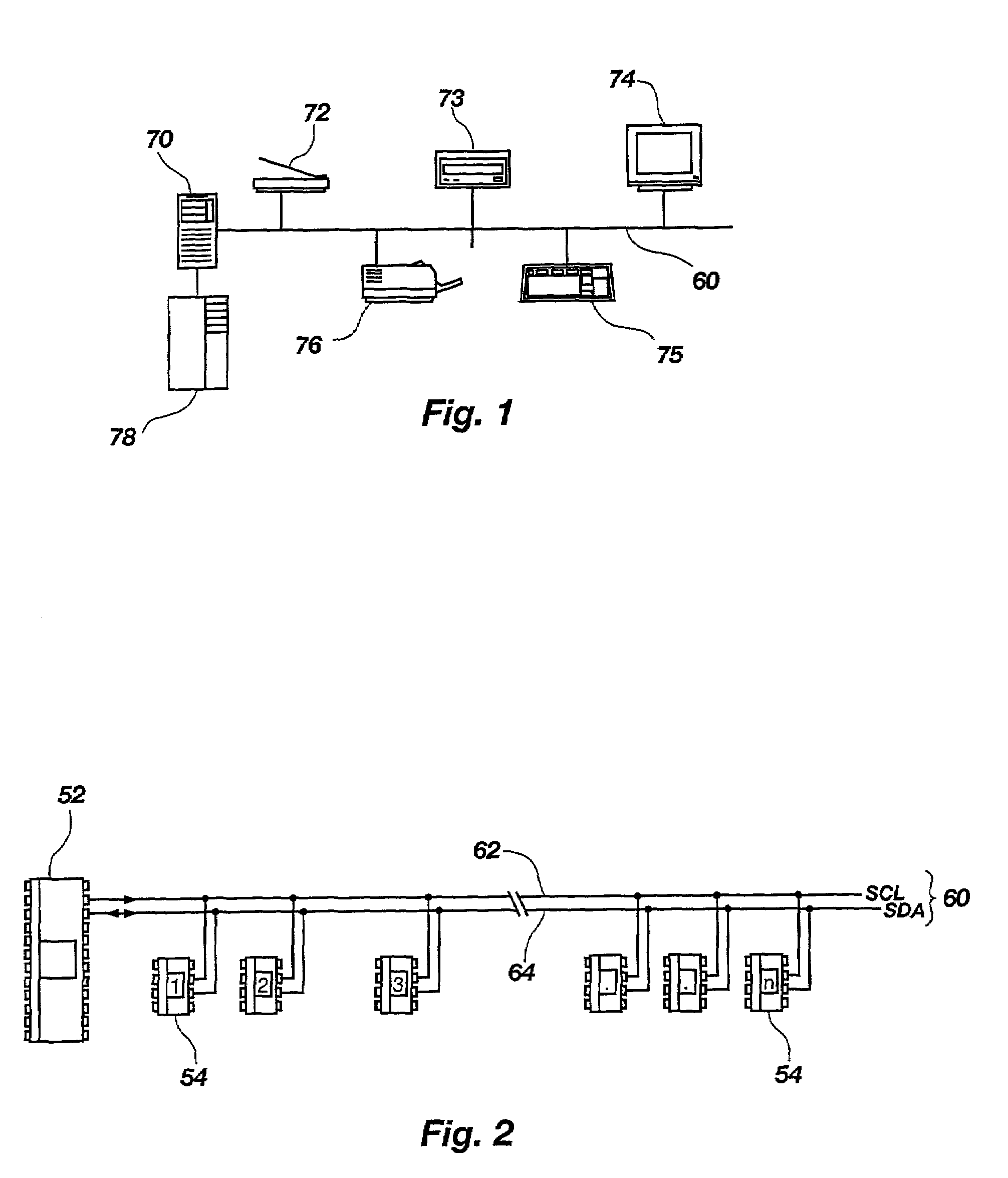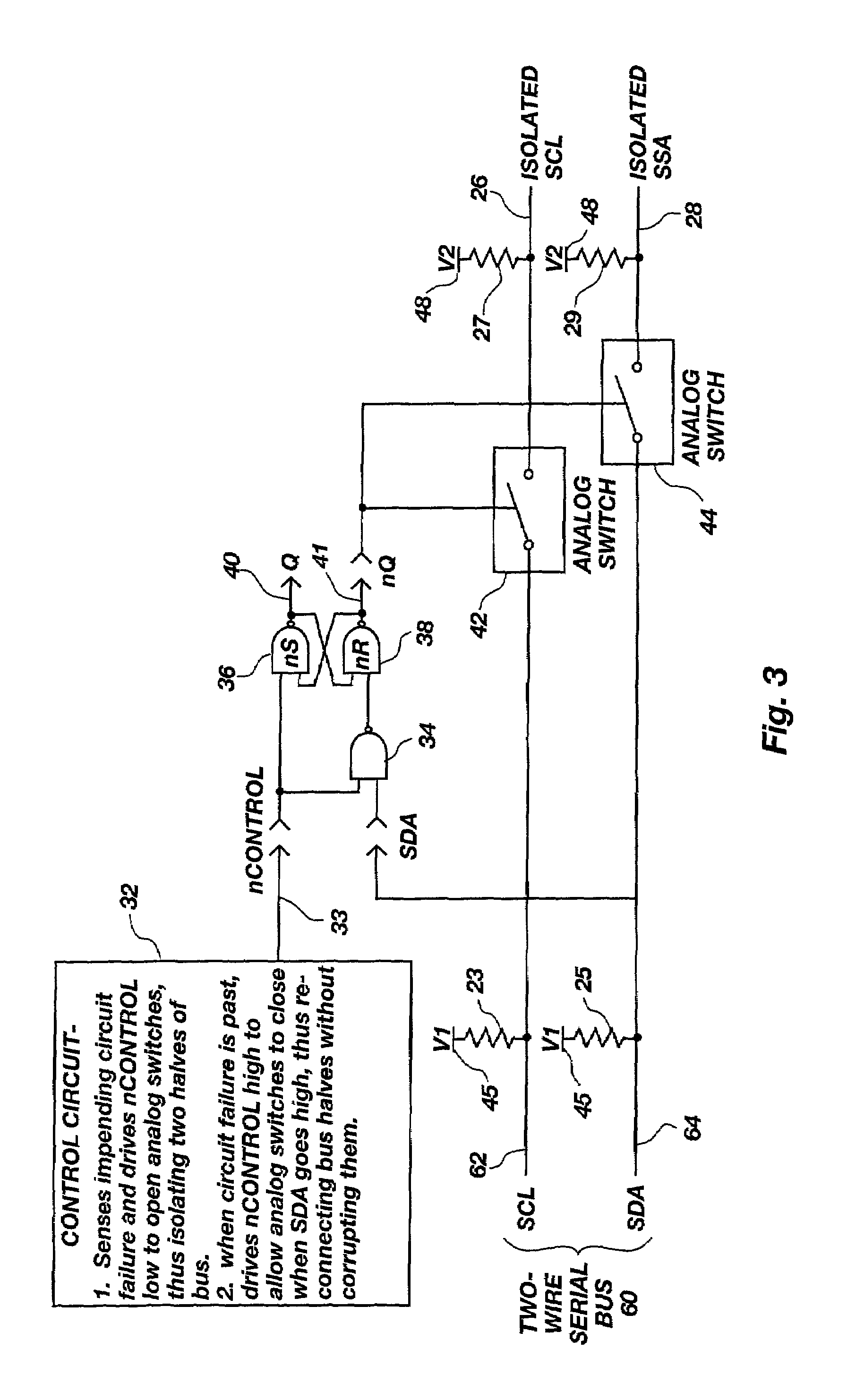Method and apparatus for connecting devices to a bus
a technology for connecting devices and buses, applied in the field of electric buses, can solve problems such as inability to accept solutions, system is more susceptible to disturbance, and open collector techniques have drawbacks
- Summary
- Abstract
- Description
- Claims
- Application Information
AI Technical Summary
Benefits of technology
Problems solved by technology
Method used
Image
Examples
Embodiment Construction
[0015]A TWS bus allows bus mastering by any device on the bus utilizing pull-ups. The bus is actively driven to a logic LOW state, but typically pulled to a logic HIGH state by pull-up resistors for each device on the bus. When some of the devices on such a bus have backup power, draining of backup power whenever primary power is lost is avoided by isolating the devices with backup power from the devices without backup power on the TWS bus by use of analog switches controlled by a partially gated S / R latch and a control circuit. The control circuit detects primary power loss and causes the switches to disconnect the devices without backup from the bus. Then, when primary power is regained, the S / R latch causes the switches to reconnect these devices to the bus when the active bus traffic will not be corrupted.
[0016]In the following description, numerous specific details are set forth such as specific word or byte lengths, etc. to provide a thorough understanding of the present inven...
PUM
 Login to View More
Login to View More Abstract
Description
Claims
Application Information
 Login to View More
Login to View More - R&D
- Intellectual Property
- Life Sciences
- Materials
- Tech Scout
- Unparalleled Data Quality
- Higher Quality Content
- 60% Fewer Hallucinations
Browse by: Latest US Patents, China's latest patents, Technical Efficacy Thesaurus, Application Domain, Technology Topic, Popular Technical Reports.
© 2025 PatSnap. All rights reserved.Legal|Privacy policy|Modern Slavery Act Transparency Statement|Sitemap|About US| Contact US: help@patsnap.com



